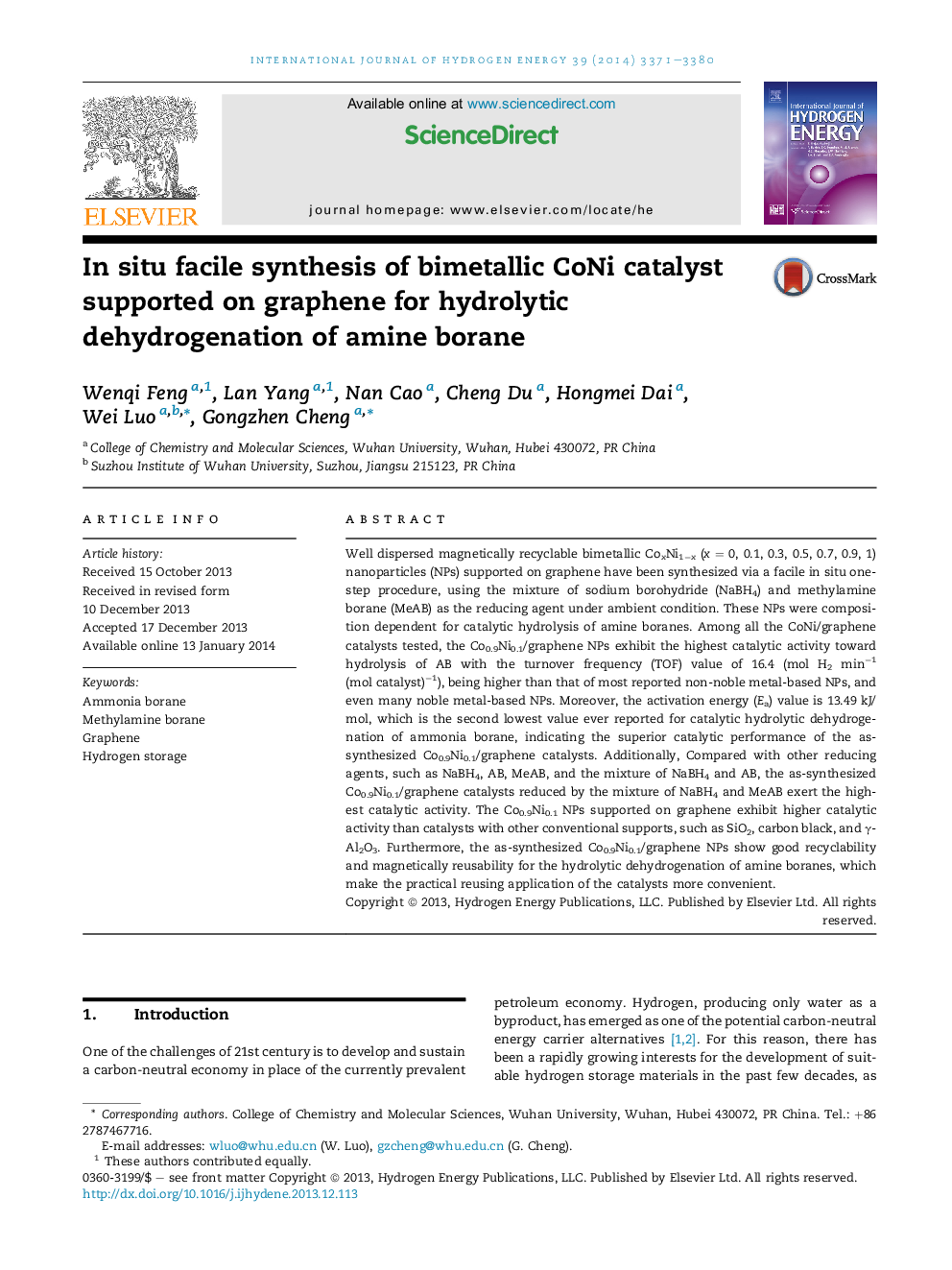| Article ID | Journal | Published Year | Pages | File Type |
|---|---|---|---|---|
| 1270641 | International Journal of Hydrogen Energy | 2014 | 10 Pages |
•One-step synthesis of graphene supported CoNi NPs by the mixture of NaBH4/AB.•The TOF is 16.4 mol H2 min−1 (mol catalyst)−1 for hydrolysis of AB.•The second lowest activation energy of 13.49 kJ/mol for hydrolysis of AB.•The catalysts show good durable stability and magnetically recyclability.
Well dispersed magnetically recyclable bimetallic CoxNi1−x (x = 0, 0.1, 0.3, 0.5, 0.7, 0.9, 1) nanoparticles (NPs) supported on graphene have been synthesized via a facile in situ one-step procedure, using the mixture of sodium borohydride (NaBH4) and methylamine borane (MeAB) as the reducing agent under ambient condition. These NPs were composition dependent for catalytic hydrolysis of amine boranes. Among all the CoNi/graphene catalysts tested, the Co0.9Ni0.1/graphene NPs exhibit the highest catalytic activity toward hydrolysis of AB with the turnover frequency (TOF) value of 16.4 (mol H2 min−1 (mol catalyst)−1), being higher than that of most reported non-noble metal-based NPs, and even many noble metal-based NPs. Moreover, the activation energy (Ea) value is 13.49 kJ/mol, which is the second lowest value ever reported for catalytic hydrolytic dehydrogenation of ammonia borane, indicating the superior catalytic performance of the as-synthesized Co0.9Ni0.1/graphene catalysts. Additionally, Compared with other reducing agents, such as NaBH4, AB, MeAB, and the mixture of NaBH4 and AB, the as-synthesized Co0.9Ni0.1/graphene catalysts reduced by the mixture of NaBH4 and MeAB exert the highest catalytic activity. The Co0.9Ni0.1 NPs supported on graphene exhibit higher catalytic activity than catalysts with other conventional supports, such as SiO2, carbon black, and γ-Al2O3. Furthermore, the as-synthesized Co0.9Ni0.1/graphene NPs show good recyclability and magnetically reusability for the hydrolytic dehydrogenation of amine boranes, which make the practical reusing application of the catalysts more convenient.
